Molecular features driving condensate formation and gene expression by the BRD4-NUT fusion oncoprotein are overlapping but distinct
- PMID: 37488172
- PMCID: PMC10366142
- DOI: 10.1038/s41598-023-39102-9
Molecular features driving condensate formation and gene expression by the BRD4-NUT fusion oncoprotein are overlapping but distinct
Abstract
Aberrant formation of biomolecular condensates has been proposed to play a role in several cancers. The oncogenic fusion protein BRD4-NUT forms condensates and drives changes in gene expression in Nut Carcinoma. Here we sought to understand the molecular elements of BRD4-NUT and its associated histone acetyltransferase (HAT), p300, that promote these activities. We determined that a minimal fragment of NUT (MIN) in fusion with BRD4 is necessary and sufficient to bind p300 and form condensates. Furthermore, a BRD4-p300 fusion protein also forms condensates and drives gene expression similarly to BRD4-NUT(MIN), suggesting the p300 fusion may mimic certain features of BRD4-NUT. The intrinsically disordered regions, transcription factor-binding domains, and HAT activity of p300 all collectively contribute to condensate formation by BRD4-p300, suggesting that these elements might contribute to condensate formation by BRD4-NUT. Conversely, only the HAT activity of BRD4-p300 appears necessary to mimic the transcriptional profile of cells expressing BRD4-NUT. Our results suggest a model for condensate formation by the BRD4-NUT:p300 complex involving a combination of positive feedback and phase separation, and show that multiple overlapping, yet distinct, regions of p300 contribute to condensate formation and transcriptional regulation.
© 2023. The Author(s).
Conflict of interest statement
The authors declare no competing interests.
Figures


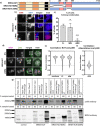
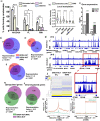
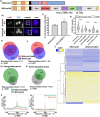

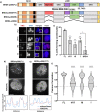
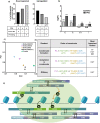
Update of
-
Molecular features driving condensate formation and gene expression by the BRD4-NUT fusion oncoprotein are overlapping but distinct.bioRxiv [Preprint]. 2023 May 11:2023.05.11.540414. doi: 10.1101/2023.05.11.540414. bioRxiv. 2023. Update in: Sci Rep. 2023 Jul 24;13(1):11907. doi: 10.1038/s41598-023-39102-9. PMID: 37214845 Free PMC article. Updated. Preprint.
Similar articles
-
Molecular features driving condensate formation and gene expression by the BRD4-NUT fusion oncoprotein are overlapping but distinct.bioRxiv [Preprint]. 2023 May 11:2023.05.11.540414. doi: 10.1101/2023.05.11.540414. bioRxiv. 2023. Update in: Sci Rep. 2023 Jul 24;13(1):11907. doi: 10.1038/s41598-023-39102-9. PMID: 37214845 Free PMC article. Updated. Preprint.
-
Mechanistic analysis of the role of bromodomain-containing protein 4 (BRD4) in BRD4-NUT oncoprotein-induced transcriptional activation.J Biol Chem. 2015 Jan 30;290(5):2744-58. doi: 10.1074/jbc.M114.600759. Epub 2014 Dec 15. J Biol Chem. 2015. PMID: 25512383 Free PMC article.
-
Structural mechanism of BRD4-NUT and p300 bipartite interaction in propagating aberrant gene transcription in chromatin in NUT carcinoma.Nat Commun. 2023 Jan 24;14(1):378. doi: 10.1038/s41467-023-36063-5. Nat Commun. 2023. PMID: 36690674 Free PMC article.
-
Supercharging BRD4 with NUT in carcinoma.Oncogene. 2021 Feb;40(8):1396-1408. doi: 10.1038/s41388-020-01625-0. Epub 2021 Jan 15. Oncogene. 2021. PMID: 33452461 Free PMC article. Review.
-
NUT Is a Driver of p300-Mediated Histone Hyperacetylation: From Spermatogenesis to Cancer.Cancers (Basel). 2022 Apr 29;14(9):2234. doi: 10.3390/cancers14092234. Cancers (Basel). 2022. PMID: 35565363 Free PMC article. Review.
Cited by
-
Transcription regulation by biomolecular condensates.Nat Rev Mol Cell Biol. 2025 Mar;26(3):213-236. doi: 10.1038/s41580-024-00789-x. Epub 2024 Nov 8. Nat Rev Mol Cell Biol. 2025. PMID: 39516712 Review.
-
Phase Separation in Chromatin Organization and Human Diseases.Int J Mol Sci. 2025 May 28;26(11):5156. doi: 10.3390/ijms26115156. Int J Mol Sci. 2025. PMID: 40507965 Free PMC article. Review.
-
Transcriptomic profiling of a late recurrent nuclear protein in testis carcinoma of the lung 14 years after the initial operation: a case report.Transl Lung Cancer Res. 2024 Jul 30;13(7):1756-1762. doi: 10.21037/tlcr-24-259. Epub 2024 Jul 11. Transl Lung Cancer Res. 2024. PMID: 39118893 Free PMC article.
-
Nuclear Phase Separation Drives NPM1-mutant Acute Myeloid Leukemia.bioRxiv [Preprint]. 2025 May 28:2025.05.23.655671. doi: 10.1101/2025.05.23.655671. bioRxiv. 2025. PMID: 40501735 Free PMC article. Preprint.
-
Probing condensate microenvironments with a micropeptide killswitch.Nature. 2025 Jul;643(8073):1107-1116. doi: 10.1038/s41586-025-09141-5. Epub 2025 Jun 4. Nature. 2025. PMID: 40468084 Free PMC article.
References
-
- Shirnekhi HK, Chandra B, Kriwacki RW. The role of phase-separated condensates in fusion oncoprotein-driven cancers. Ann. Rev. Cancer Biol. 2023;7:73–91. doi: 10.1146/annurev-cancerbio-061421-122050. - DOI
-
- Chandra B, et al. Phase separation mediates NUP98 fusion oncoprotein leukemic transformation. Cancer Discov. 2022;12(4):1152–1169. doi: 10.1158/2159-8290.CD-21-0674. - DOI - PMC - PubMed
Publication types
MeSH terms
Substances
Grants and funding
LinkOut - more resources
Full Text Sources
Molecular Biology Databases
Research Materials
Miscellaneous

